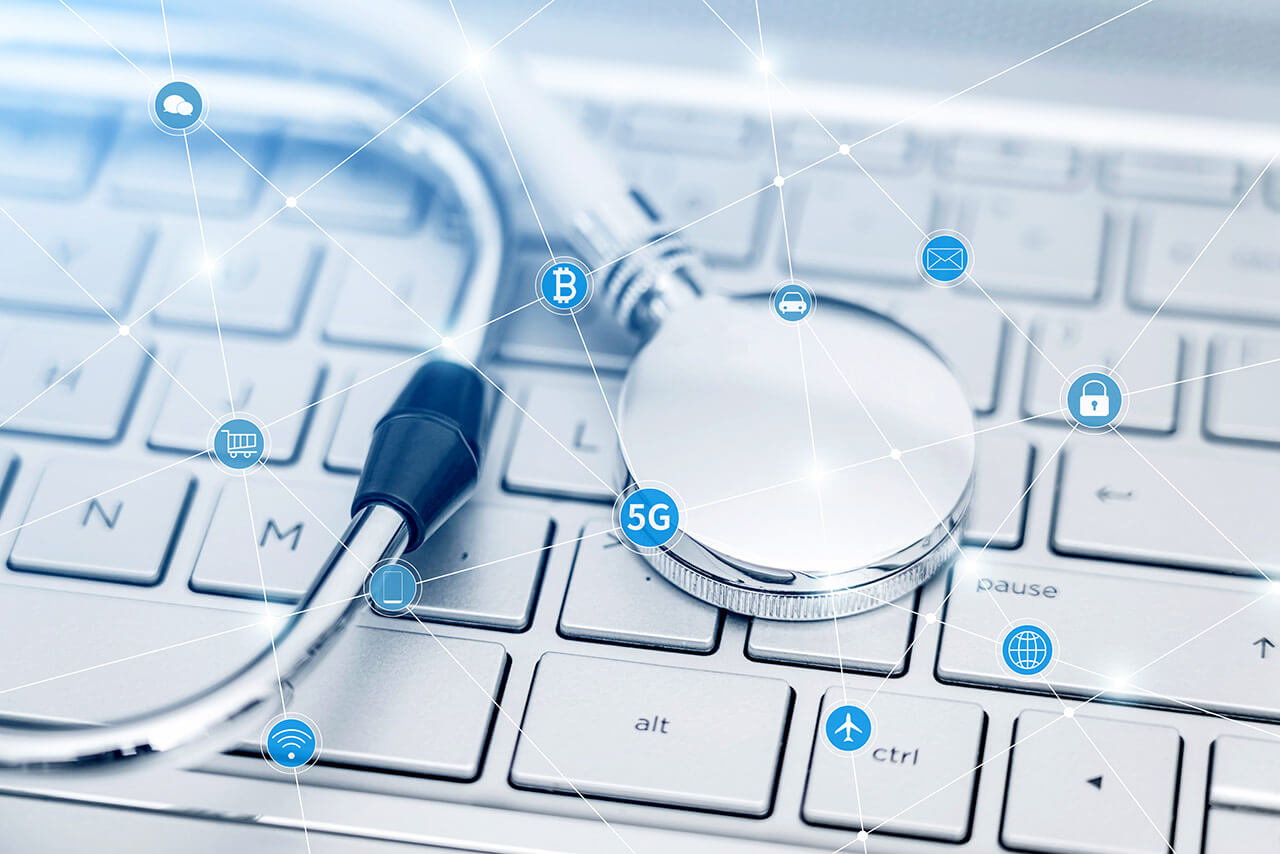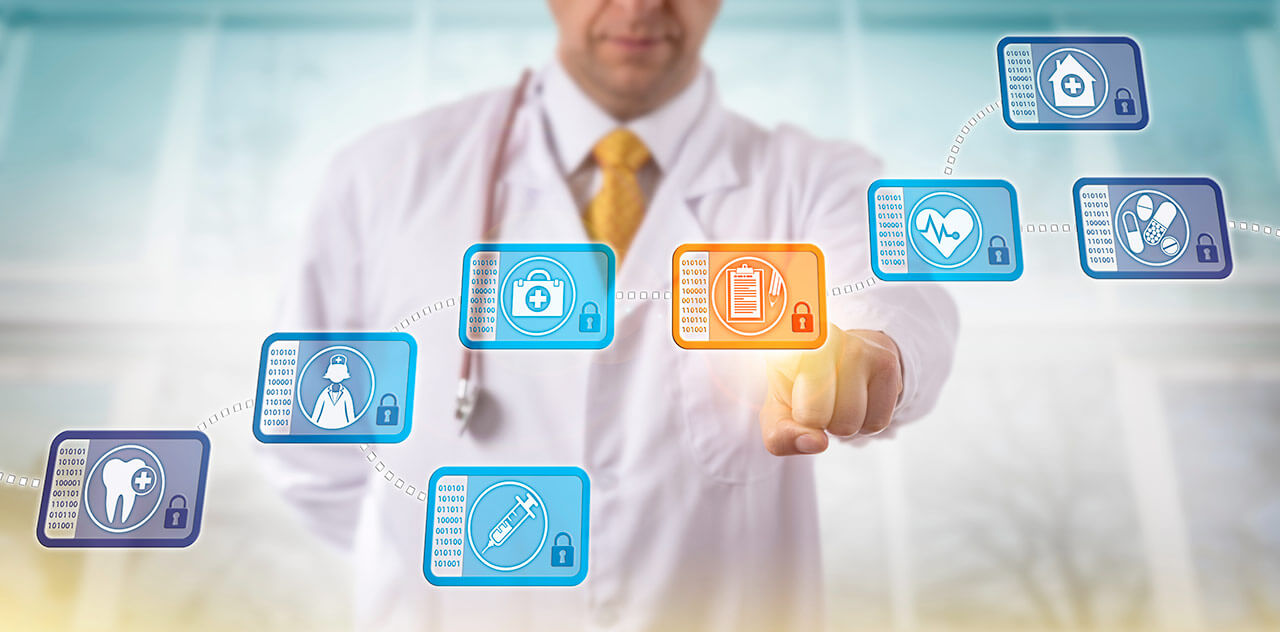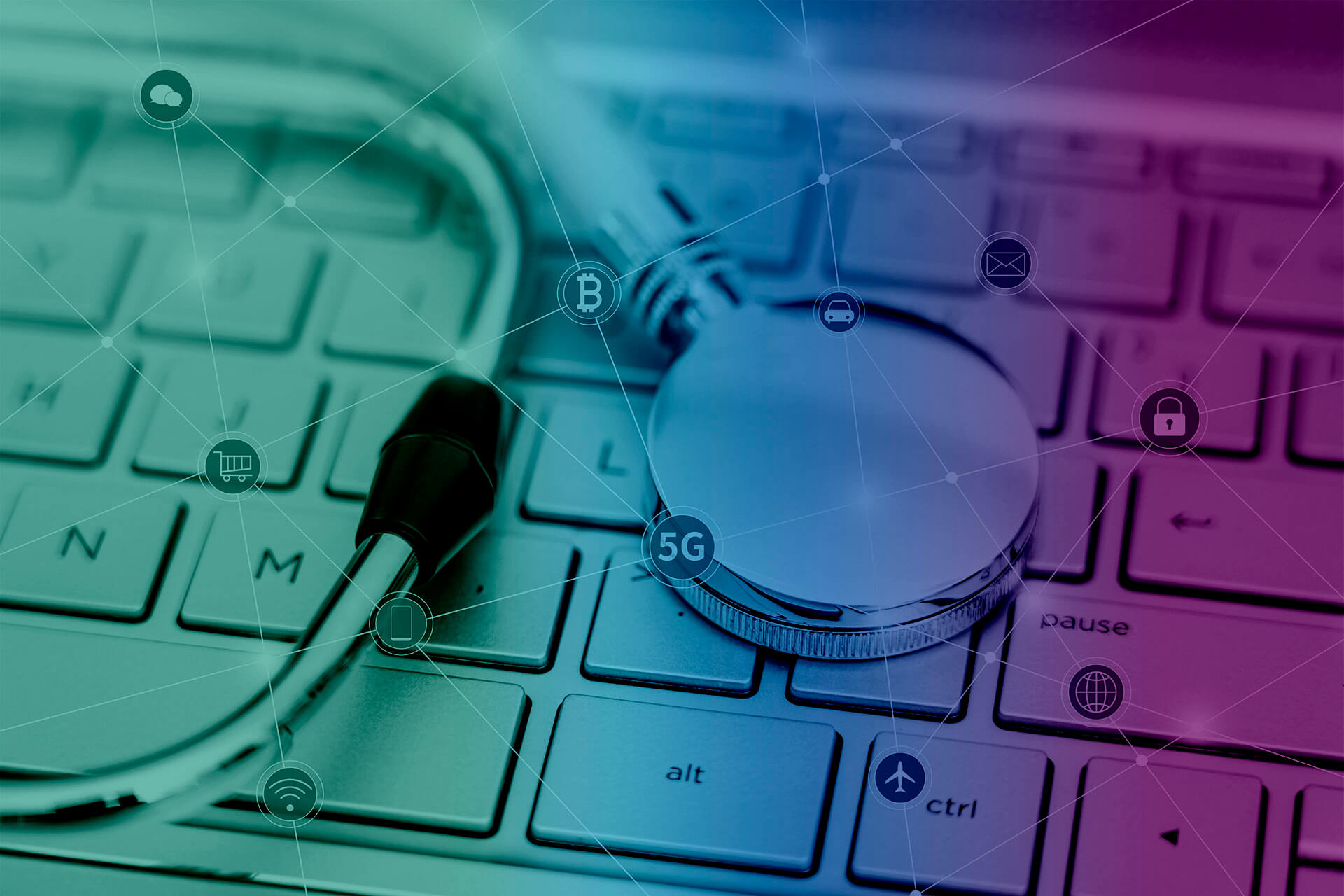The blockchain network in the field of healthcare has numerous applications and its use is having a great impact, increasing the level of reliability and security of information.
What is blockchain?
44% of European healthcare organisations have never heard of blockchain, according to an IDC survey. However, this technology is increasingly present in the healthcare sector. But what exactly is blockchain?
Blockchain is a technology that allows transactions or data exchange to be securely recorded. It is a chain of encrypted terminals, like a transaction ledger, where the movement of money, bitcoins or data is recorded. It is considered ‘decentralised’ because it is the users of these terminals who approve the transaction. In other words: in a blockchain network, a single, agreed and unalterable record is made, which is distributed among all the nodes that make up the network. In this way, even if one of the nodes fails, the information about the exchange is always available.
How is it verified that a transaction or block comes from the correct user? By means of smart contracts, without the need for a third party to verify it. This is the opposite of the usual money transactions, where a bank intervenes to verify the transaction.

Blockchain operation and characteristics
As we said, a blockchain network is made up of many nodes that function as an accounting register. There, all the transactions that take place in the network are recorded. Each block of the chain has a specific and unalterable place within it, as it contains information from the previous block.
At the same time, this complete chain is stored in each node that makes up the network, so that a large number of exact copies exist simultaneously, guaranteeing that it is always available and cannot be altered by third parties. These nodes through which the blocks travel are linked and encrypted in order to increase the level of data protection and privacy.
This has meant that, although blockchain was initially used mainly for decentralised economic transfers between individuals, now it is mostly information that circulates.
“The great advantage of blockchain is that it makes it possible to record a transaction, contract or any other type of action on the internet in a verifiable, unforgeable and transparent way, without the need for a third party to verify its validity.”
Impact of the blockchain on the healthcare sector
Why is the blockchain set to play a key role in the healthcare sector? That is the question the industry is asking itself… and for which there is already an answer.
While talk of blockchain commonly leads us to concepts such as bitcoin and cryptocurrencies, blockchain networks for secure transactions have applications in many other fields such as the one that concerns us: the healthcare sector.
The blockchain network in the healthcare sector has multiple applications and its use is already having a huge impact, increasing the level of reliability and security of the information shared, whether it be data on patients, medicines, etc. This network enables us to address today’s major challenges, such as counterfeit medicines, segmentation of medical data, poor administration and management, and security of the critical data stored.
We are therefore witnessing a societal transformation driven by the rise of new technologies, capable of controlling and securing access to huge volumes of health data. Thus, the main application of blockchain technology in the healthcare sector is to make all information systems patient-centric and facilitate the exchange of health data in a secure and efficient way.

But there is much more…
Applications and uses of blockchain in hospitals
- Develop systems that allow sharing patient information between medical centres around the world, as well as having immediate, secure and decentralised information on thousands of patients.
- Transferring patient information and medical records: This means that multiple copies exist and there is little chance of information being lost. In addition, if the chain is encrypted, more security is guaranteed against hackers and cyber-attacks on clinical databases. In this way, blockchain makes it possible to have an unalterable and searchable medical record at all times. Thus, its application for the management of medical records could solve the problem of interoperability, offering a platform that guarantees a secure exchange of information.
- Telemedicine: Patients can meet remotely with their specialists and general practitioners, so that they can prescribe or treat remotely. The blockchain encrypts information and allows it to be accessed anywhere.
- Wearable devices – such as wristbands, pacemakers, sugar sensors, etc. – collect and transfer data to hospitals and IoT devices, playing an important role in remote patient monitoring. In this case, the blockchain network can be a platform for information exchange and storage, where each patient has his or her own digital identity.
- This technology allows for traceability of medicines and adequate supply. In fact, this solution is used today to have complete traceability of all the components of a medicine that is consumed or prescribed by hospitals and private clinics.
- Drug verification: The pharmaceutical industry can use this network to store information on drugs and medicines, guaranteeing that this data cannot be altered, avoiding possible falsifications.
In short, the blockchain network makes it possible to work on today’s main challenges, such as drug counterfeiting, fragmentation of medical data, poor administration and management, and the security of stored data.

Case studies of blockchain use in the healthcare sector
Since a few years ago, but especially nowadays, we can find in the healthcare sector thousands of blockchain solutions in operation or under development.
Some of them are:
- The MiPasa project by IBM, Oracle and Microsoft together with Johns Hopkins University and the WHO, to use powerful analytics and privacy tools available to all to collect reliable and quality data in the early and immutable detection of asymptomatic coronavirus carriers.
- Hit Foundation (Zurich) asks patients for their confidential data in exchange for tokens (digital value of a good or service) that they can use to pay for healthcare services. Hit then aggregates the data to learn about diseases or develop new drugs.
- Chronicled (San Francisco) applies blockchain and IoT to supply chains to improve the traceability of temperature- and time-sensitive products such as vaccines.
- Medicalchain builds a blockchain platform to create an immutable electronic record, and share it with doctors, hospitals, labs and pharma, if the patient allows it. It also supports telemedicine to communicate patients with their doctors through online sessions, and cryptocurrency as payment for healthcare services.
- The pharmaceutical company Pfizer created a blockchain-enabled system to meet the security of the drug supply chain. And more companies are working to incorporate blockchain uses in their supply chain management.
- On the other hand, tech companies such as Samsung is betting on blockchain technology to create health passports to boost air travel or hospitality consumption.
Conclusion
It is clear that the healthcare sector is one of the great beneficiaries of the new blockchain technology, capable of ensuring the privacy and integrity of the data being exchanged. With an innovative approach, blockchain will improve reliability and security in data management, reducing the problems of integration and standardisation that exist between different systems.



